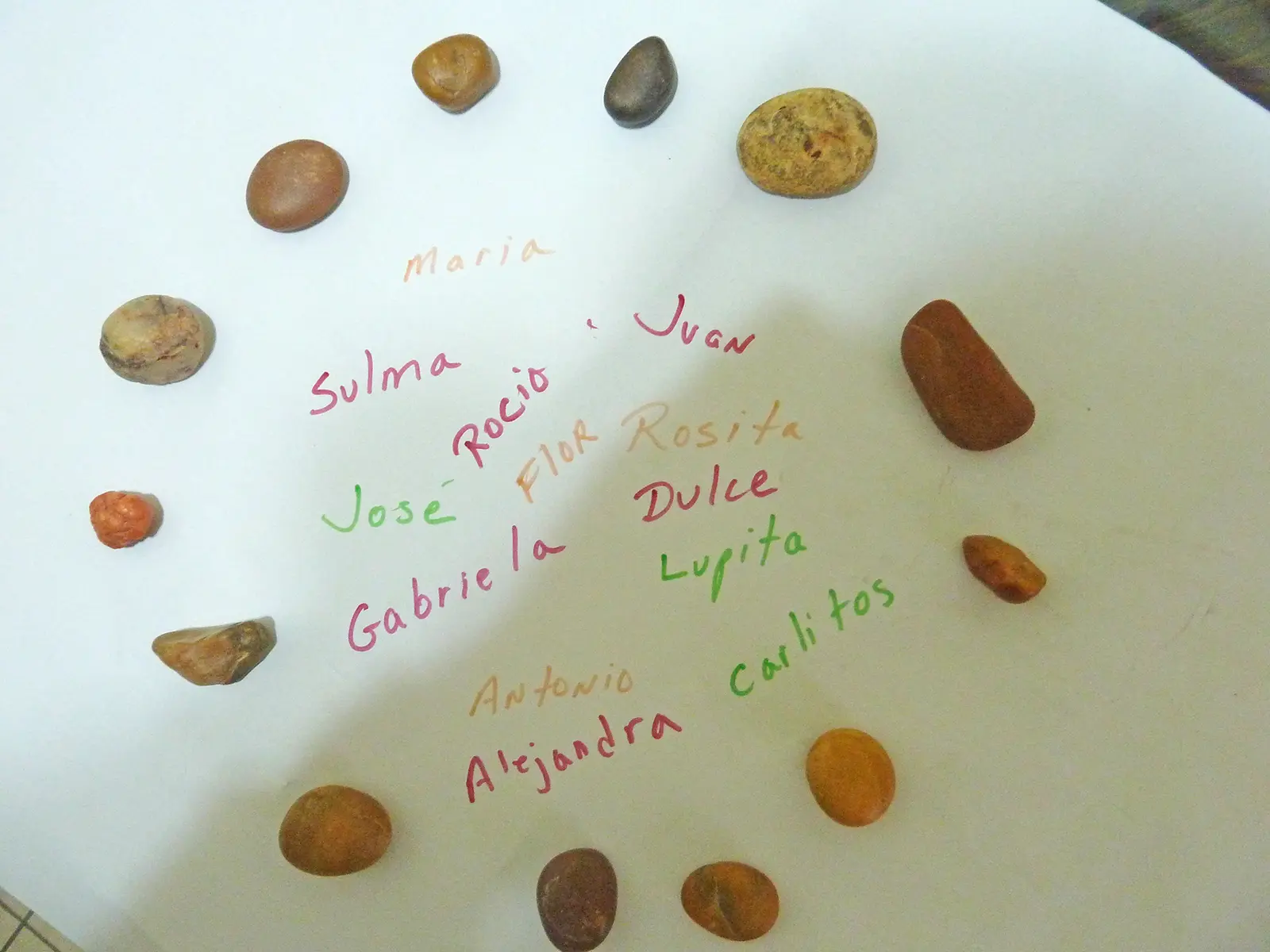
Stones with the names of children at Oasis del Niño in Mexicali, Mexico.
Our white rental van pulls into Oasis del Niño Center with seven Maryknoll Affiliates from the greater Ohio area. We have taken the afternoon off from painting, cleaning and trimming trees at Casa Betania migrant center (it is the group’s second visit to the Mexico-U.S. border within a year) to visit with 13 children who are cared for by three Sisters of the Sacred Heart Order of Mexico.
The children live at the center Monday through Friday. The sisters take them to school, give them lodging, religious education and tons of tender loving care. The campus is complete with 20 acres of land with a playground, soccer field and a small salt pine forest from which tire swings propel shouting kids through blue sky.
The children are from families who have been displaced from other parts of Mexico due to poverty and or violence. One family I know fled their home in the state of Michoacan because a criminal organization stole their land. The gang told them not to return; if they did, they would be killed. The families of the children at Oasis del Niño have experienced similar trauma. Unfortunately, violence and poverty have followed them to Mexicali.
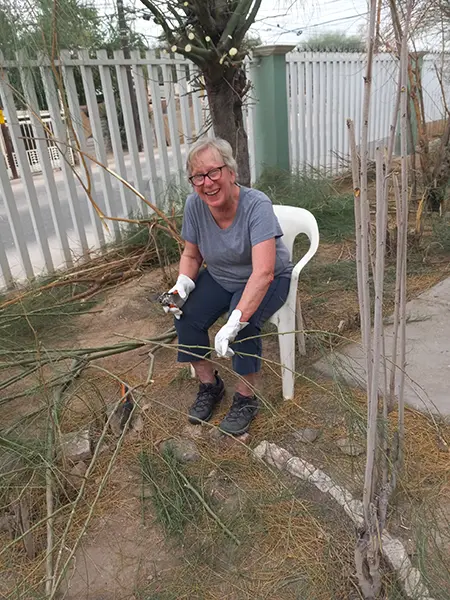
Laura Clarke, trimming trees at Casa Betania.
The children are waiting for us in the auditorium. El Centinela, a 2,500-foot mountain, stares us down from the west. In 2010, when a 7.2 earthquake struck Mexicali, El Centinela (whose name means watchman) took the brunt of the blow. People here swear it saved the city from total destruction. “The Watchman” is now a revered rock, the “solace of fierce landscapes.”
The affiliates break the ice with the kids by teaching them the hokey pokey song. They bring gift bags with slinkies, colored pencils, magic markers, T-shirts, tattoo stickers and balls. Moons and suns and turtles appear on foreheads, arms and cheeks, while “We love Ohio” glares through sparkling eyes.
The kids then take us on a tour of their dorms. “Aquí dormimos nosotros,” 7-year-old María says as she picks up a plush bear from her bed and cuddles it. The boys show off Hot Wheels, model airplanes and Star Wars characters.
“Why does the boy’s dorm have cabinets over the beds and the girls nothing?” Pam asks. The shadow of a 747 Jumbo Jet flies across her face as Juan lands it at the foot of his bed. “Point well taken,” I say and tell her I’d do my best to remedy that.
Amidst all the mementos the kids share, it is the absence of photographs that strikes me. José, a big round sixth grader, has very low literacy skills. I work with him three afternoons a week. He once told me a man lived in their house. “He taught me some words in English and how to count to 10,” he said. I asked him if he could show me. He took a deep breath, exhaled and then glided through digits with good pronunciation. His face lit up with a smile. I asked him if he had a photograph of the man; he shook his head no, took a deep breath, exhaled and counted again.
We return to the auditorium through the playground area, taking the leisure to hang and play with the children.
Back in the auditorium, we each choose a stone (from a table filled with round, smooth gems from the dry washes around El Centinela). I offer a few suggestions: Pick a stone that says something about you and then we’ll share about it. If you’d like, write your name on it, and give it to someone.
Stones in hand, we sit in a circle ready to share. Suddenly, Carlos acts out another suggestion by throwing his stone to the tile floor. It bounces, and his face lights up as he chases after it. Soon 13 stones are bouncing and ricocheting through the room.
Curt holds up his stone, looks at it intently and, with a soft voice, says, “My stone has red shades. It reminds me of my red beard.” Little Antonio saves the day, saying, “My stone reminds me of my mother’s red hair.” Diana chimes in that her rock reminds her of the seed of a buckeye tree, which has three sides. “There’s three children in my family.”
Little Gabriela says her stone reminds her of an egg, and Laura describes a fish. “It’s rough and smooth, like me.” Jan’s stone reminds her of the eye of her mind. “Sometimes sad, sometimes happy, but always searching for good things, like to help others.” Little Alejandra talks so fast and so long, it is hard to keep the translation up; but Janice, next to her, savors every delicious word.
The dust and stones have settled, and the affiliates have gone back home to their stateside rhythms. During a follow-up phone call, James tells us his stone is on his desk. Juan wrote James’s name on it. I wonder what else our secret-keeping stones could tell us.
Perhaps, like a photograph, they now produce a series of images and prayers for our precious little ones at Oasis del Niño.

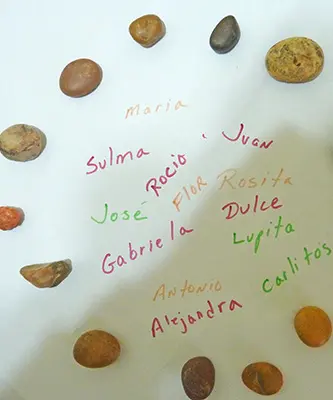

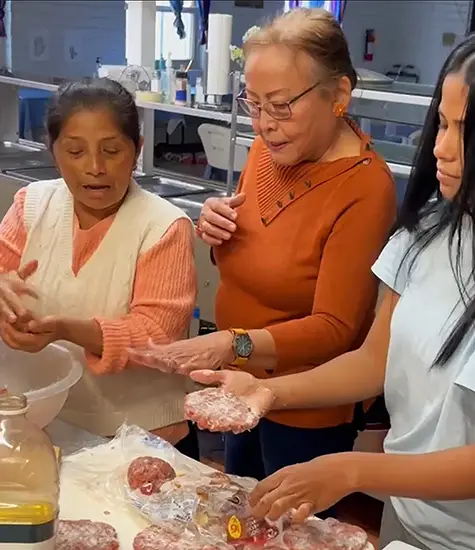
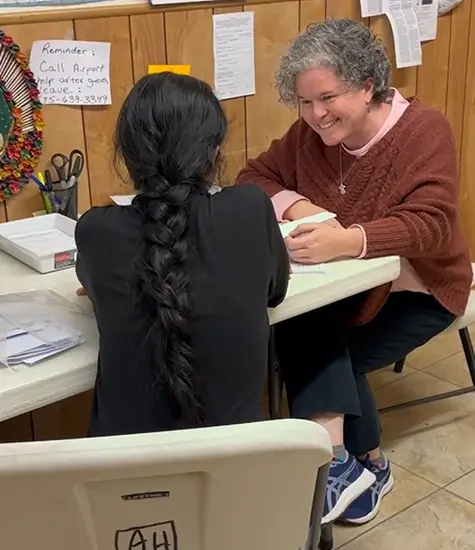
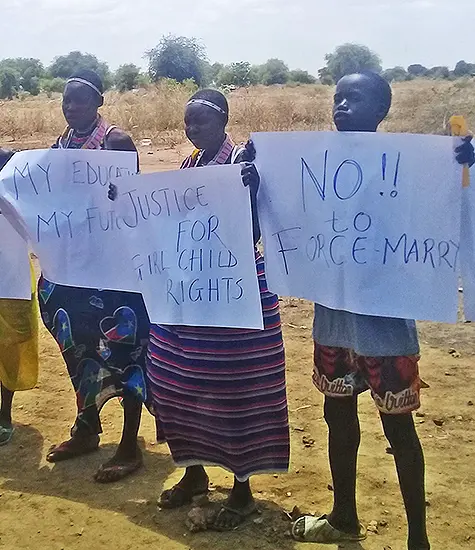




Thank you for sharing this very touching story Rick